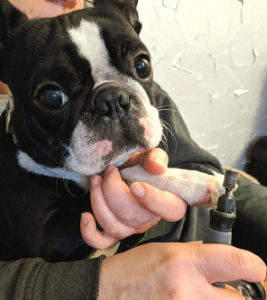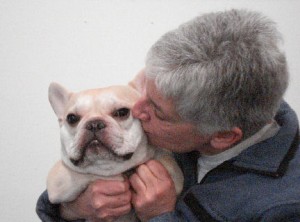What’s involved in routine dog care?
Most people are familiar with the daily routine and expenses (of both time and money) of dog care. That involves feeding, usually two times a day, the best dog food you’re able to provide. It’s also daily walks, both for elimination and exercise. It should also include daily training games. And some cuddle time, too.
Many first-time dog owners don’t realize there’s more to it than that. Even aside from annual veterinary visits, or periodic appointments with a groomer.
Regular routine dog care
Since we sisters have four dogs, all very different, and all with individual characteristics, we thought we’d share our dog care routine. We realize we have an excessive number of dogs, and we’re far more obsessed with dog stuff than “normal” people, but it gives an idea of the things that should be dealt with on a regular basis.
On Mondays and Thursdays every dog gets brushed. Three of our dogs are short-coated, and a brisk going-over with a rubber curry brush works for them. Simon and Booker, the Boston Terriers, shed a little bit. With brushing it’s even less. Torque, the French Bulldog, sheds continually and abundantly. Every time we brush him we’re surprised by the amount of fur that comes off.
Tango is a rough-coated Brussels Griffon and gets slicker-brushed those days. His bearded-and-mustachioed face gets extra washes on Wednesday and Friday. Without that extra care routine, he develops sores at the corners of his eyes where gunk can build up.
All of our dogs have short faces – it’s the look we prefer. But it does come with some extra care needed. We pay extra attention to wrinkles and folds, wiping as needed. If they’re not kept clean and dry, “fold dermatitis” happens and it’s not fun for anyone.
Sunday morning is dog care time
Every Sunday morning we’re home is “ablutions.” All four dogs get their nails trimmed. That’s 66 nails (Torque has his dew claws.). Then we move on to brushing teeth, washing faces, and cleaning ears.
We check each dog over and give extra attention where it’s needed. Booker has a couple of places between teeth that need extra care – we’ve even been known to floss if required. That attention to our dogs’ teeth has meant that none of their teeth has needed professional cleaning in years. Which means no anesthesia. It’s something we avoid if at all possible.
Tango’s face fur gets trimmed every other week before we wash his face. It keeps the gunk to a minimum.
We douse Torque’s feet with medicated powder during his turn. It keeps him from itching and has reduced the foot-licking. Which means no redness or irritation.
Torque also gets an application of Nose & Paw Balm – his nose leather tends to dry out and crack unless we keep it moisturized.
Everybody needs something
Simon, 2-years-old and the best-behaved for grooming maintenance, doesn’t need any extra weekly attention. But don’t think we get off scot-free. We don’t know why, but he’s not a clean pooper. His poops are totally normal, but his butt always needs wiping when he’s done. Every single time.
Worth all the work
All together, we probably spend about an hour per dog each week on regular care. It adds up because we do have multiple dogs, and the two of us usually work together. So that’s about eight man-hours per week, just to take care of four dogs.
That’s not counting feeding and walking.
They’re worth it.










